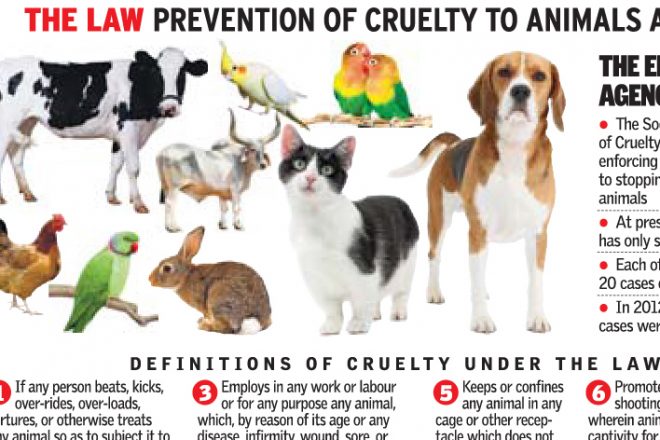Animal cruelty is a pervasive issue that often slips beneath the societal radar. It exists in many forms and affects a plethora of species across various environments. It is not a mere aberration of human behavior, but rather a systemic problem that is deeply rooted in societal indifference and a lack of empathetic understanding of non-human lives. This article aims to elucidate some essential facts about animal cruelty that everyone should know, shedding light on the realities faced by our fellow creatures.
Firstly, it is pivotal to recognize that animal cruelty manifests in different ways: neglect, physical abuse, and emotional torment. Neglect includes withholding food, water, shelter, or necessary veterinary care. Abandonment is a particularly heart-wrenching form of neglect, affecting countless animals who find themselves wandering, confused, and frightened. Statistics reveal that millions of animals enter shelters each year, with a significant number never finding loving homes. This chilling reality prompts a pressing question: Why does abandonment occur so frequently? The reasons are oftentimes complex, intertwining financial hardships, lack of education about animal needs, and impulsive adoption choices.
Another alarming fact is that animal cruelty is not confined to domestic animals. Wildlife faces its own array of abuses, from poaching to habitat destruction. The deplorable act of poaching has devastated populations of iconic species, such as elephants and rhinos, driven by the insatiable demand for ivory and exotic furs. The black market thrives on these heinous acts, with an estimated $20 billion generated annually from illegal wildlife trade. How does one reconcile the beauty of nature with the brutality inflicted upon it? This disturbing juxtaposition highlights a psychological disconnection; the admiration for wildlife often coexists with actions that endanger their very existence.
The consequences of animal cruelty extend far beyond the immediate harm inflicted on individual creatures. Societal impacts are equally concerning. Studies indicate a strong correlation between animal abuse and violent behavior towards humans. This phenomenon suggests that individuals who inflict harm on animals may display a propensity for aggression toward people as well. Such trends underscore the importance of addressing animal cruelty not just as an isolated concern, but as an essential aspect of broader societal health.
Moreover, the implications of inhumane treatment are profound in the context of agriculture. Factory farming practices epitomize cruelty on a massive scale, subjecting animals to overcrowded and unsanitary conditions. Livestock are often kept in cages so small that they cannot move, leading to physical and psychological distress. The economic motivations driving such practices can obscure the ethical ramifications, stripping away our capacity for compassionate consideration of sentient beings. It is worth pondering: how can society prioritize profit over empathy? This moral quandary remains a contentious debate, exposing the darker sides of consumerism.
Education emerges as a critical factor in combating animal cruelty. By raising awareness about the conditions animals endure, we can foster a culture of empathy and responsibility. Initiatives aimed at teaching compassion towards animals in schools have proven effective in changing perceptions and behaviors in young individuals. Additionally, community outreach programs can bridge the gap between knowledge and action, empowering individuals to intervene in instances of cruelty and advocate for animal rights. The question remains, what further steps can we take to embed these principles into the fabric of society?
Legislation plays a pivotal role in addressing animal cruelty, yet the effectiveness of such laws often remains unfulfilled. While many regions have established animal welfare acts, enforcement varies dramatically. Some jurisdictions impose stringent penalties for abusers, while others lack robust legal frameworks. The disparity raises fundamental questions about the societal value placed on animal welfare. Why do certain communities prioritize animal protection, while others turn a blind eye? This inconsistency in legislative action reflects a broader societal ambivalence toward animal rights.
In addition to laws, the role of communities cannot be overstated. Grassroots movements have emerged to advocate against cruelty, amplifying the voices of those who cannot speak for themselves. Volunteering at local shelters, supporting anti-poaching initiatives, or simply spreading awareness can significantly influence public perception and policy change. Engaging with others who share a passion for animal welfare fosters a network of support, driving change at both local and global levels. The interplay between individual action and collective effort highlights an essential truth: each of us has a role in advocating for the voiceless.
In conclusion, the facts surrounding animal cruelty unveil a complex and multifaceted issue that warrants our urgent attention. From domestic neglect to systemic abuses within agriculture and wildlife trade, the implications are far-reaching. Cultivating empathy through education, advocating for stronger legislation, and fostering community involvement are critical steps in combating this insidious problem. As we move forward, it is imperative to challenge the cultural norms that perpetuate indifference and develop a consciousness that respects and protects all living beings. Only then can we hope for a world where animal cruelty is not an accepted reality but a relic of the past.








